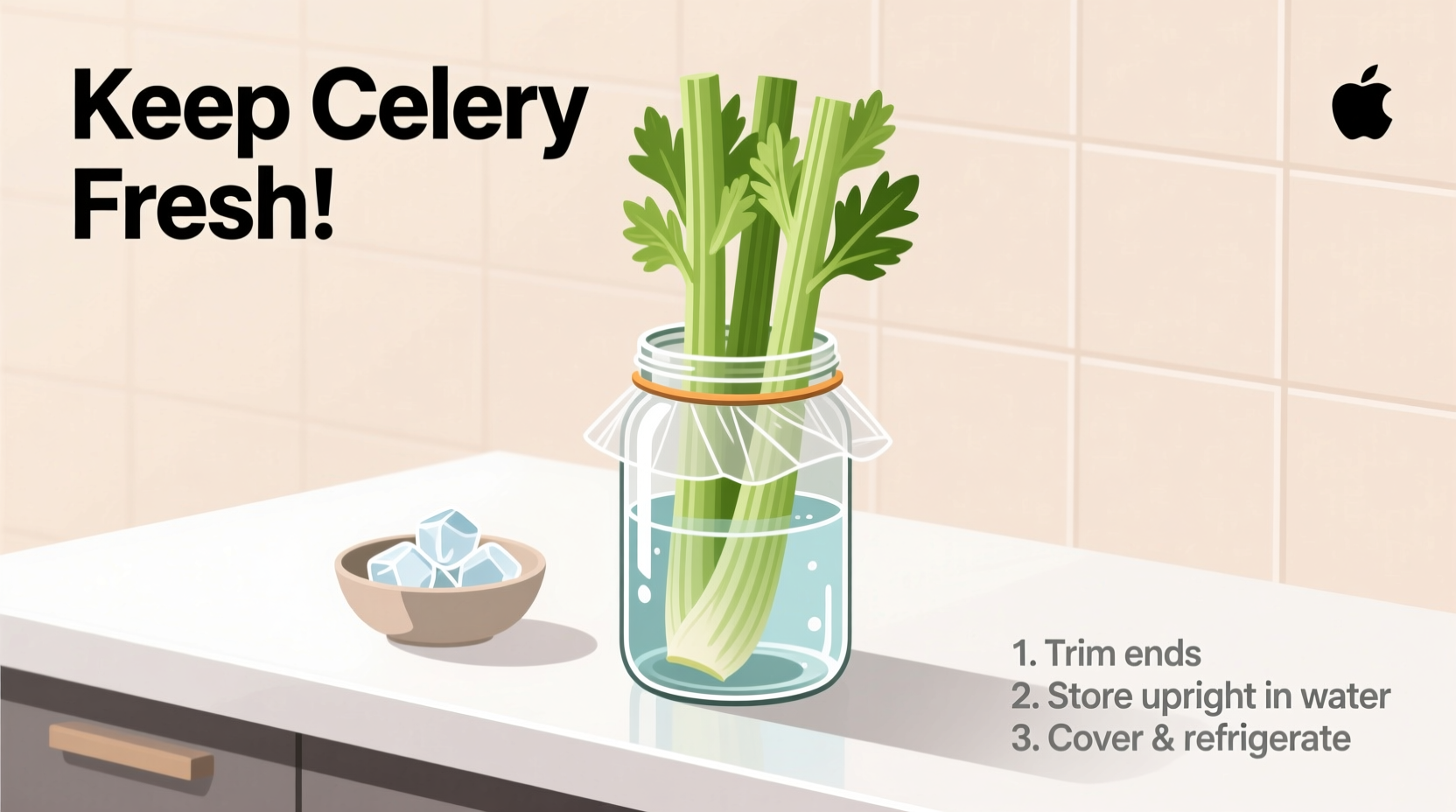Nothing's more disappointing than reaching for crisp celery only to find limp, rubbery stalks. Proper storage isn't just about convenience—it directly impacts food waste, flavor preservation, and even safety. With Americans discarding over 130 billion pounds of food annually, mastering celery storage represents a small but meaningful step toward more sustainable kitchen practices.
Why Standard Storage Methods Fail Celery
Celery's high water content (95%) makes it particularly vulnerable to moisture loss. When stored loosely in plastic bags—the most common method—celery rapidly dehydrates due to ethylene gas buildup and insufficient humidity control. University of California agricultural researchers found that celery stored in conventional plastic bags loses 30% of its crispness within just 5 days.
The Water Method: Professional Results at Home
Chefs have used this technique for decades, and food science confirms its effectiveness:
- Cut celery stalks from the base (don't wash yet)
- Place upright in a container with 1-2 inches of water
- Cover loosely with a reusable produce bag or beeswax wrap
- Store in refrigerator crisper drawer (34-38°F)
This method works because it mimics celery's natural growing conditions, allowing stalks to draw moisture as needed. The USDA's Agricultural Research Service confirms that maintaining 95-100% relative humidity—achieved through this water reservoir system—optimizes vegetable freshness.
| Storage Method | Shelf Life | Crispness Retention | Food Safety Rating |
|---|---|---|---|
| Water container + loose cover | 28-30 days | 95% | Excellent |
| Aluminum foil wrap | 21-25 days | 85% | Excellent |
| Plastic bag (standard) | 7-10 days | 40% | Good |
| Bundled on counter | 3-5 days | 20% | Poor |
Aluminum Foil Alternative for Space-Constrained Fridges
When refrigerator space is limited, tightly wrapping celery in aluminum foil provides excellent results. The foil allows ethylene gas to escape while maintaining optimal humidity. Cornell University's Food Science Department found this method extends freshness by 2-3 times compared to plastic storage. Wrap stalks completely, pressing foil snugly against the celery, then store vertically in your crisper drawer.
Reviving Limp Celery: The 15-Minute Fix
Don't toss slightly limp celery just yet. Food scientists at the University of Massachusetts developed this simple revival technique:
- Trim ½ inch from the base
- Submerge stalks in ice water for 15-20 minutes
- Pat dry before use
This works because the cold water creates osmotic pressure that forces moisture back into dehydrated cells. For best results, use revived celery in cooked applications rather than raw preparations.

Freezing Celery for Long-Term Storage
For cooked applications like soups and stews, freezing preserves celery for 6-8 months:
- Wash and chop celery into desired sizes
- Blanch in boiling water for 3 minutes
- Immediately transfer to ice water bath
- Dry thoroughly on clean towels
- Store in airtight freezer bags with air removed
The National Center for Home Food Preservation emphasizes that blanching is critical—it deactivates enzymes that cause flavor and texture degradation during frozen storage.
When to Discard Celery: Safety First
While celery rarely causes foodborne illness, spoiled celery presents clear warning signs:
- Slippery or slimy texture (discard immediately)
- Strong, unpleasant odor
- Significant discoloration (yellowing or browning)
- Hollow centers in stalks
The FDA advises that vegetables showing multiple spoilage indicators should be discarded, as they may harbor harmful bacteria even if only partially affected.











 浙公网安备
33010002000092号
浙公网安备
33010002000092号 浙B2-20120091-4
浙B2-20120091-4